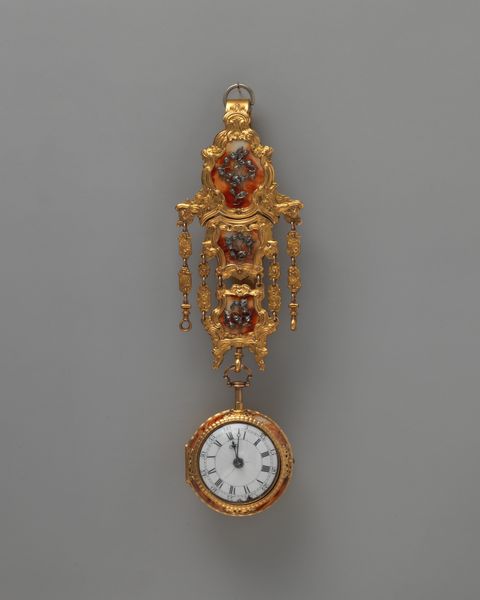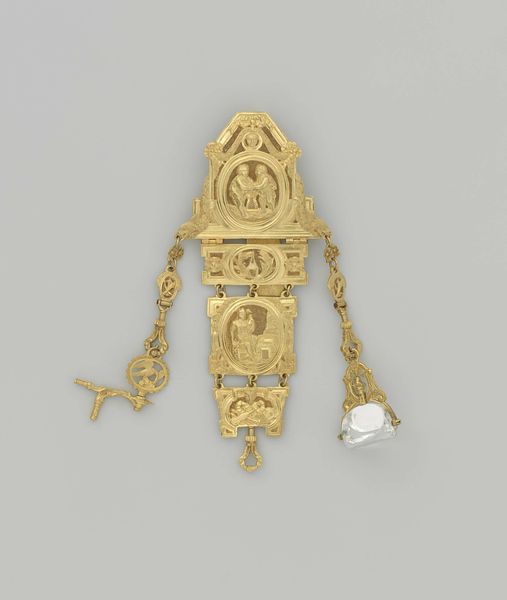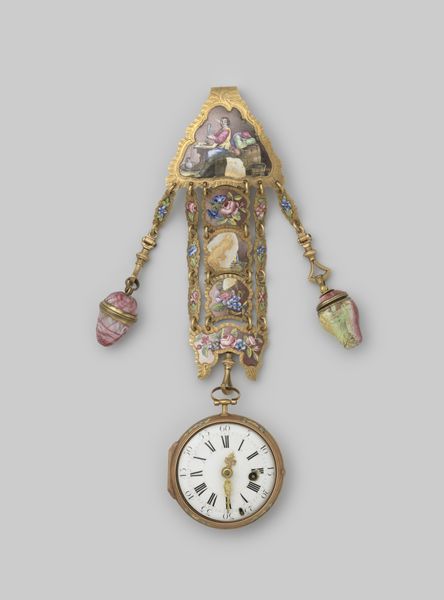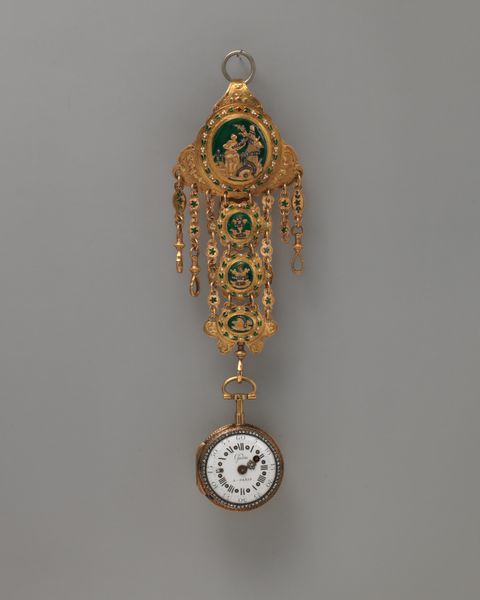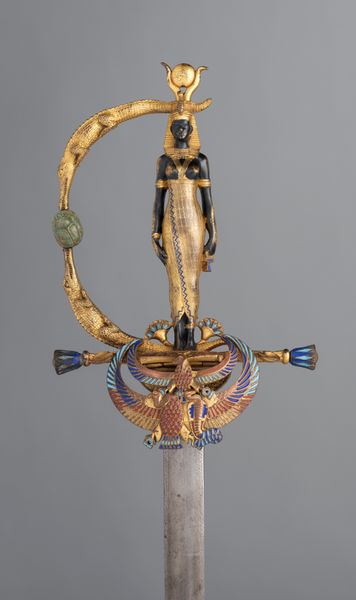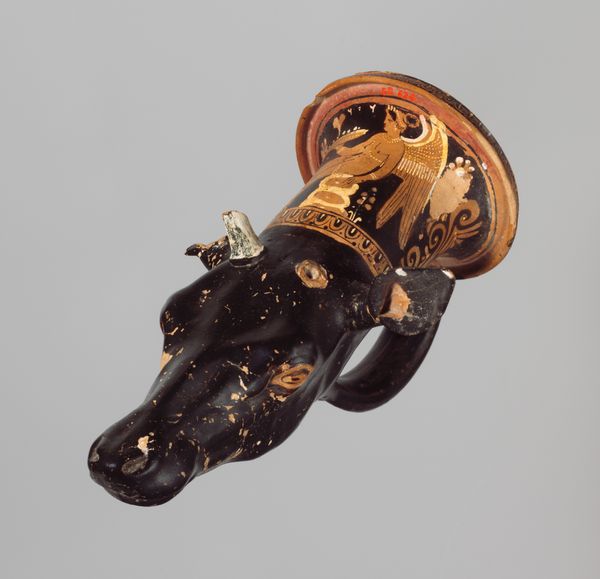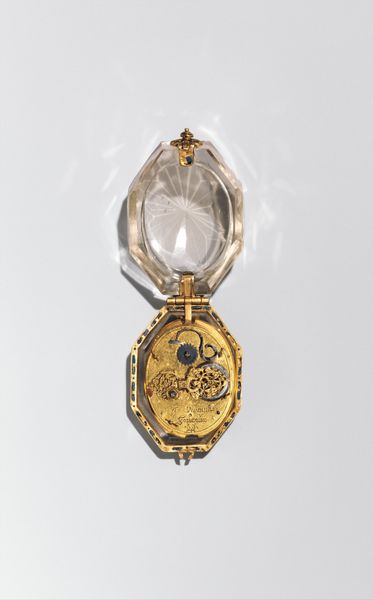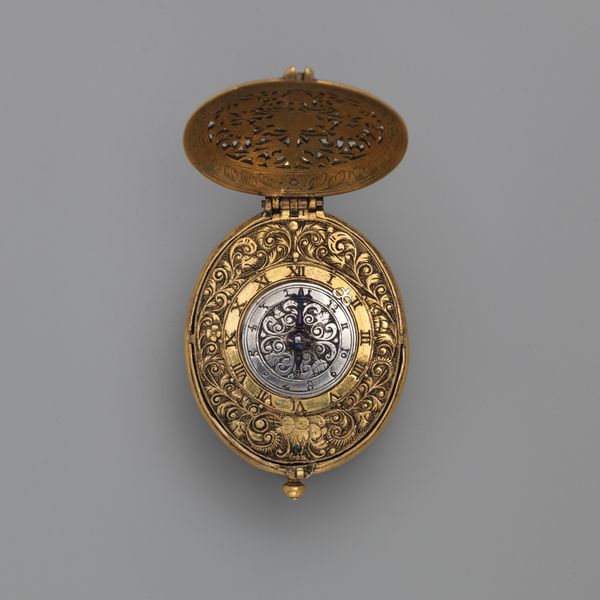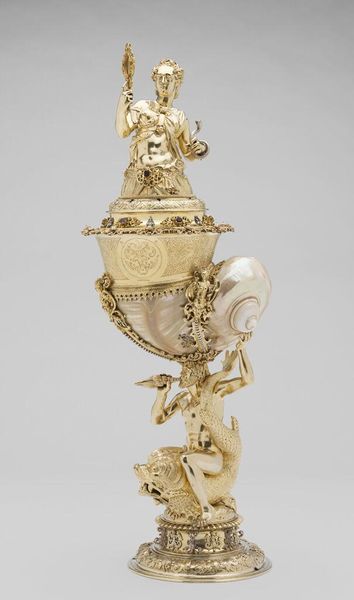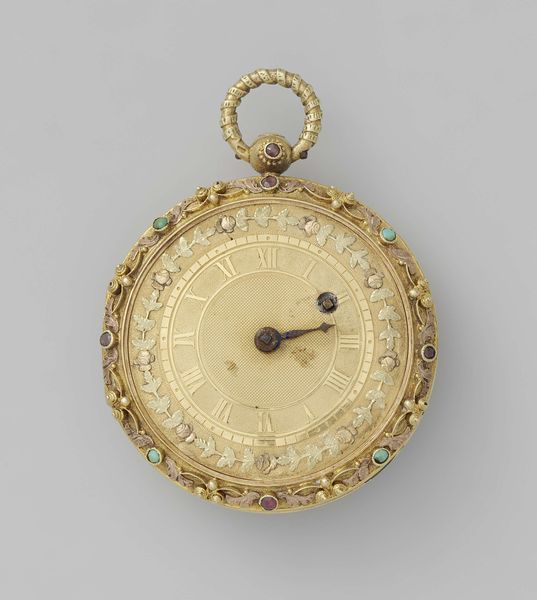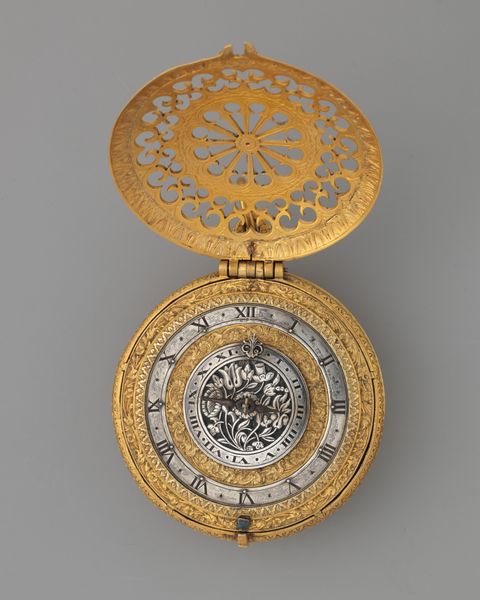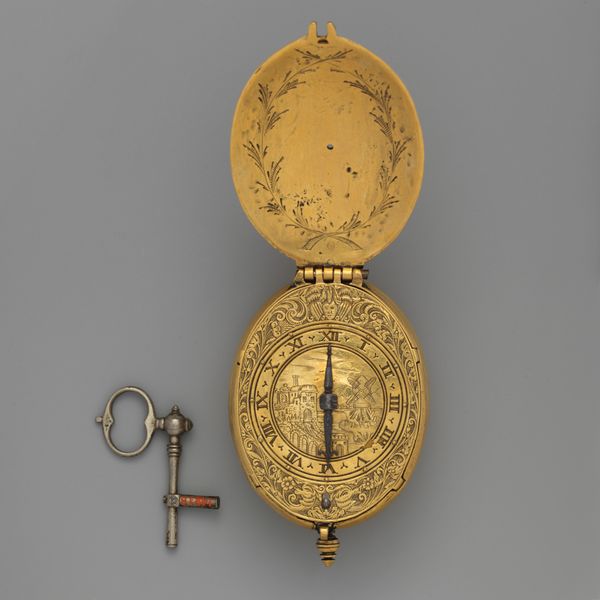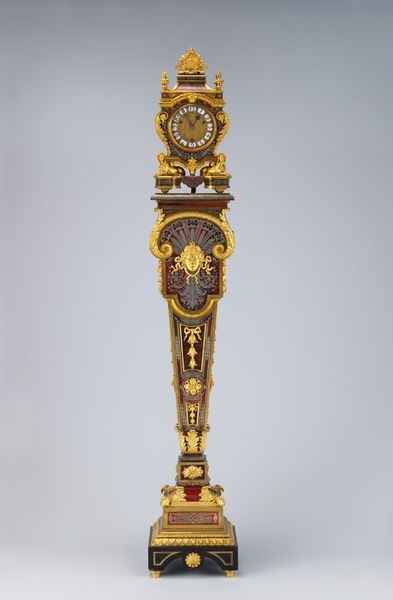
silver, metal, gold
#
silver
#
baroque
#
metal
#
gold
#
decorative-art
#
miniature
Copyright: Rijks Museum: Open Domain
Curator: Looking at this piece, I'm struck by the overall impression, a controlled chaos that somehow feels celebratory. What are your initial thoughts? Editor: Utter opulence. It’s almost aggressively ornate, isn't it? Like time itself is a prize to be won or a secret to be flaunted. What do we know about it? Curator: This is a pocket watch, dating back to around 1755. The artisan behind it was Jean-Baptiste Baillon. You'll notice it’s fashioned from gold, silver, and metalwork, a splendid example of baroque decorative art. Editor: Baroque, indeed. All those intricate little dangles – what are they meant to convey? I spot a Dalmatian. Curator: Precisely! Those hanging ornaments, seemingly disparate, speak to the status and tastes of its original owner. Miniatures were common adornments to watches of the period. They act like tiny reliquaries of personal identity and societal allegiances. The watch is like an inventory. Editor: So the Dalmatian probably wasn’t just for show. Was that some beloved pet, or a heraldic symbol? Perhaps a witty allusion to someone with spots on their reputation? Curator: It could be any of those things, a portrait in miniature—it depends on who possessed this extraordinary item and the social language that underpinned their choices. Also, the gemstones hold meanings too: status, yes, but also perhaps something more symbolic to its commissioner. These jewel-encrusted timepieces served to advertise more than simply the hour. Editor: It certainly invites us to construct narratives. Was this intended to be carried on one's person, or more an item displayed prominently in a cabinet or study? Curator: The intent was definitely for it to be worn, attached to clothing, demonstrating refinement. It reflects a sensibility—a desire for conspicuous consumption. I see this object as an expression of privilege and identity cast through the lens of fleeting time. Editor: That’s beautifully put. To think that something so small can hold so much social and personal history, like echoes in its metallic depths. A lovely, if intimidating, reminder that every object speaks volumes if we listen closely enough.
Comments
rijksmuseum about 2 years ago
⋮
Jean Baptiste Baillon, purveyor to the French queen, was famous for his watchcases with diamond flowers. This example gives an impression of his speciality; he used various colours of gold to craft asymmetrical bouquets of flowers with hearts and petals partly made of diamonds. Baillon entrusted the goldsmith’s work to specialists, such as Dequay.
Join the conversation
Join millions of artists and users on Artera today and experience the ultimate creative platform.

